Issue 89 : 5 September 2021
Talofa Lava, Kia Orana, Malo E Leilei, Tena Koutou, Hello ...
... and welcome to the latest issue of “For The Love Of The Game”, the official e-zine of the New Zealand Amateur Sport Association Inc., founded in 2017.
If you have any feedback on this issue, ideas for future articles, or would like to contact the Editor, please click here. And, you are invited to forward the e-zine to others you know, who may be interested in reading it. An archive of earlier editions of the e-zine can be found here. For those who follow Twitter, you can also follow the Association, @AmateurSportNZ.
If you are interested in applying for membership of the Association, please click here.
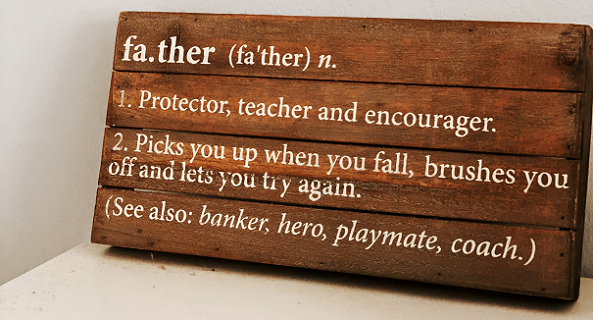
("Happy Fathers Day" to all Dads who help deliver sport to their local communities)
Last Chance To Complete 2021 National Sport Club Survey ...
Over one thousand sports clubs nationally have already engaged with the 2021 National Sport Club Survey, with the survey to close shortly. Overall, the survey results indicate a similar engagement level to last year, where insights were gathered from around 90 different sports, representing 200,000 Kiwi community sportspeople.

(More than 1,000 sport clubs have engaged with the 2021 survey)
Some interesting 2021 insights have already emerged, including that the average size of a sport club in NZ (185 members) may be trending back upwards after three years of decline. Following analysis of the data from the 2021 survey, regional workshops to discuss insights will be offered to local communities (COVID permitting), later this year.
“The Panel” Calls For Regulatory Relief For Sport Clubs ...
On Friday, 27 August, the Association's Chairman spoke with Wallace Chapman, Livia Esterhazy and Patrick Gower on Radio New Zealand’s “The Panel”, on the wave of community sport club dissolutions which is threatening the fabric of amateur sport in this country.

The Panel supported the Association's call for the easing of the regulatory burden for incorporated sport bodies and suggested that a Government-led project be established to find a better way for volunteer-led organisations to meet their obligations under incorporation. You can listen to the discussion by clicking here.
Three Tales Of Involuntary Dissolution ...
“Minister, we have a problem!” 70% of clubs dissolved by the Registrar on 19 August who spoke to the Association said they were unaware of being dissolved and are still operating. Only 1 in 7 had shut down. Most were unaware of any contact by the Registrar. Following are three examples illustrating where the current regulatory process is malfunctioning.
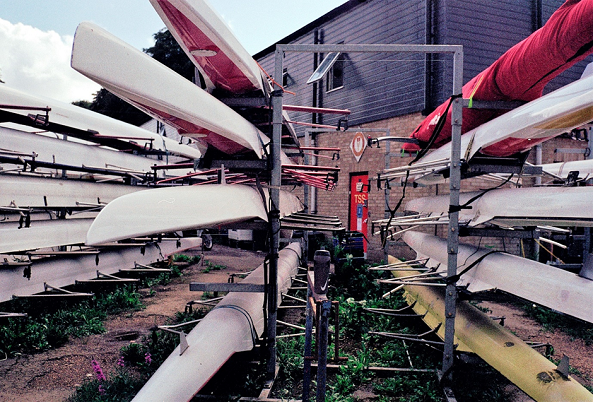
(Loss of incorporated status also means ineligibility for grant funding)
A dissolved South Island rowing club is trying to get back on its feet, with plans to rejuvenate the sport in their area, having obtained permits and consents to build a new shed. Grant funding to support their goals is not available, if unincorporated. They were unaware of their dissolution.
One dissolved racquet sports club in the Auckland region with nearly 1,000 members and over $1 million in assets reports it was not aware of any communication from the Registrar, nor aware of its dissolution before being contacted by the Association.
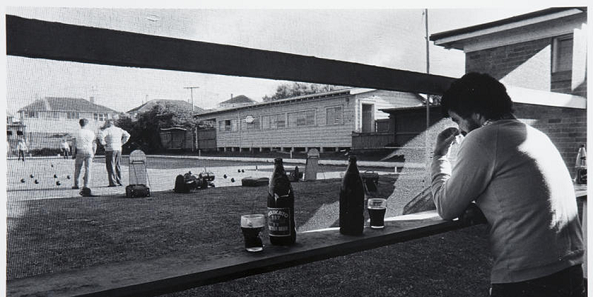
(Liquor licenses can be lost with loss of incorporated status)
Loss of incorporation means loss of income. One active dissolved bowling club in Southland run by volunteers contacted by us, not having received notice from the Registrar, has now had its liquor license revoked by the local authority, casting a cloud over its future.
Viewpoint : “Leisure, Pleasure & Recreation” – The Real Reason For Sport ...
As a global investment sector, “sport” is already included as a sub-industry within the 11 sectors comprising the Global Industry Classification Standards (or GICS) used by investors to develop and manage their portfolios. More specifically, the owners and operators of sport and fitness centres, stadiums and golf courses are classified as a forming part of the “consumer services” sector, while companies that engage in producing and selling entertainment products and services, including sports teams, form part of the “media and entertainment” sector.

(The global sports industry is estimated to worth around US$700 billion)
A 2016 report by KPMG refers to sports’ primary role as a source of “employment” and “entertainment’, suggesting that the global sports industry “at one per cent of global GDP, is estimated to be worth around US$600 to $700 billion.”
But there is a growing concern that the single-minded focus of sport as an economic and investment opportunity is fraying the fabric of active community interest and involvement, with many sports now becoming increasing exclusive owing to costs of entry and participation, compared to the community inclusivity on which sport and competition is traditionally based.
A problem for sporting codes which follow the economic model of “employment” and “entertainment”, is that sooner or later, everyone will want to be on the payroll. After all, if those at the top of the pyramid receive income (or at least their expenses reimbursed), volunteering to create that opportunity for others loses its allure and purpose if there is no monetary reward. Far better to separate commercial sport from amateur sport and in doing so dispose of the “old chestnut” that amateur sport cannot survive without the largesse of the professional game.
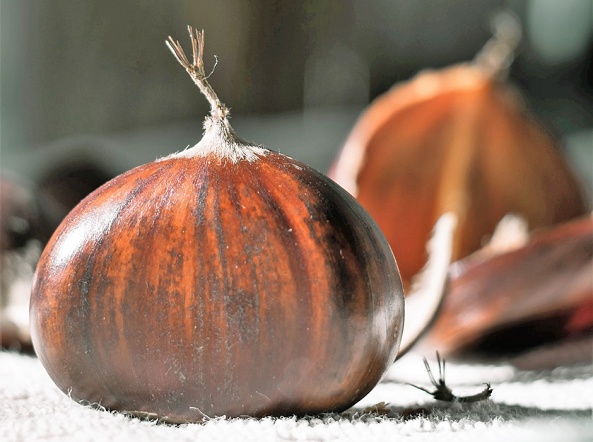
(Is the "old chestnut" that professional sport keeps amateur sport alive, true?)
This week, the Guardian reported on the lust for global growth by some sports, which is losing sport’s true purpose as a means of leisure, pleasure and recreation. You can read more, here.
Players Can Experience Reduced Blood Flow To The Brain ...
Researchers at the University of South Wales (USW) have found that professional rugby union players can experience a reduction in blood flow to the brain and cognitive function over the course of a season. The research team at USW’s Neurovascular Research Laboratory looked at the effects on the brain function and cognitive ability of players, which included the ability to reason, remember, carry out mental tasks and formulate ideas. All players that took part in the study saw a decline in brain function when comparing pre-season and post-season results.
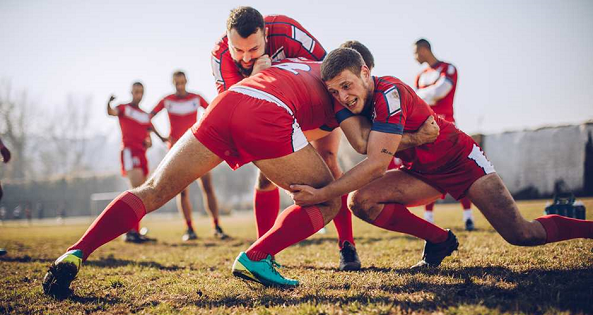
(Concussion incidence is three times greater in the forwards, than the backs)
They found that cognition decreased across the season in both forwards and backs, although there was a greater degree of impairment seen in the forwards than in the backs players. The study also found that concussion incidence also appeared to be three times greater in the forwards compared to the backs. You can read the full story, by clicking here.

(New research reveals cognition decreases across a season for professional players)
Paekakariki Surf Lifesaving Club Closes Its Clubroom Doors ...
Paekakariki SLSC’s clubrooms are being permanently closed as a result of being unsuitable for occupation, but the club has every intention to continue its activities.
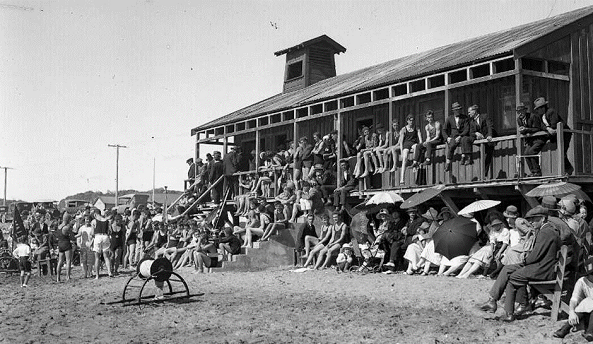
(The original clubrooms, above, were destroyed by a storm in 1918)
Formed in 1913, the club plays a key community role in water safety, competition and social events on the Kapiti Coast. The club was formed following the accidental drowning of 23 year old Walter Francis Pengelley, a fireman employed on the railways, whose fishing boat capsized in the waves while approaching shore on the 18th of February that year. The club has since been serving the community for 108 years. The club's original building (shown above) was destroyed by a storm on 19 March 1918, while the club has been in their current (now closed) clubrooms since 1964. You can join the "1913 Club" to assist in with fund-raising for new clubrooms, here and you can read more about the club’s story, here.
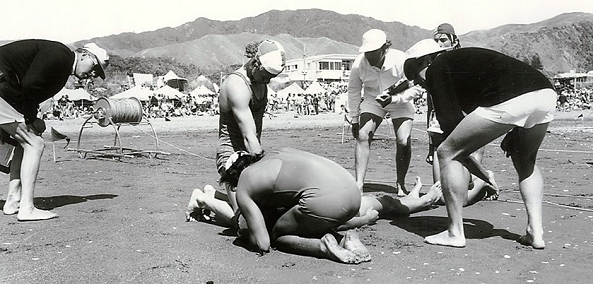
(In 1976, Paekakariki SLSC hosted the New Zealand Surf Lifesaving Championships)
Levin Women’s Bowling Club’s Final Roll-Up ...
After 79 years, the Levin Women’s Bowling Club has had it’s final "roll-up". With only 22 members, one member aged under 65 and the oldest aged 87, no green-keeper, a lack of new recruits, a lease renewal due and a lack of volunteers, the club had no option but to say "haere ra" to the community. You can read more about the club’s history and closure, by clicking here.
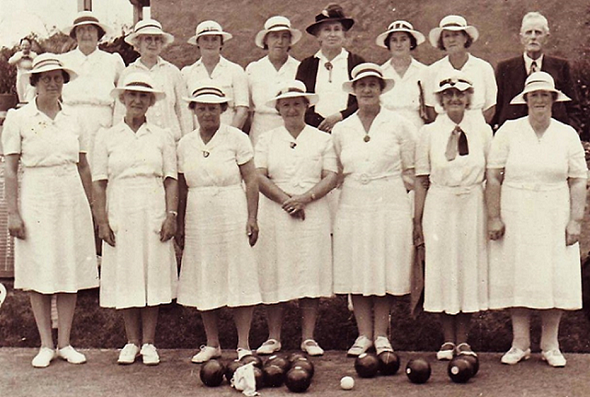
(The first Levin Women’s Bowling Club inter-club team of 1943)
From The Archives ...
TIMARU HERALD, VOLUME XCVIII, ISSUE 15102, 22 JULY 1913, PAGE 7
“By the death of Mr W. F. Simpson, railway guard, at Ashburton, the travelling public lose a courteous officer and the temperance and athletic worlds lose a champion.
The late Mr Simpson was a prominent competitor at the meetings of the South Canterbury Amateur Athletic Club twelve or fifteen years back, and among his numerous victories was one from scratch in the coveted steeplechase. He won innumerable races, being credited with 50 wins out of 70 starts, his chief successes including seven New Zealand championships (one and three miles), three Australasian championships, and two Canterbury cross-country championships. He represented Australasia at the world's championships in London, finishing third in the three miles. He established new records for Australasia for two and three miles, his time for the latter distance still remaining the best on record for an Australasian amateur.
Mr Simpson practically retired from the track ten years ago, though he was a member of the local Harriers during his residence in Waimate, but on removing to Mt. Somers he again took up running, and as late as this season won races from the scratch mark. Mr Simpson was one of the most popular and unassuming runners who ever were a shoe, and his death will be regretted in amateur circles throughout Australasia.”
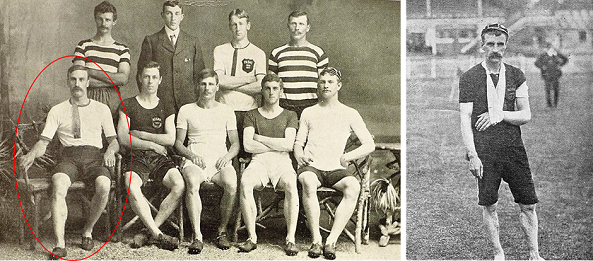
(W F Simpson as a 1901 champion and photographed impaired by the measles in 1905)
William Farey Simpson was born in 1876 and is remembered as New Zealand’s first long-distance running champion. In an extraordinary story, in the Australasian Athletic Championships in 1905 held in Sydney, Simpson was suffering from the measles. While unable to compete in the one-mile race, he started in the three-mile race with his arm in a sling owing to the rash created by the illness, but had to retire after three laps. The previous year, he married Elizabeth Ann Fletcher, with whom he had four children, the youngest of which (Irene) was born in the year that he died. Simpson won the New Zealand one-mile and three-mile championships in 1900, 1902 and 1903. He won the Australasian championship over these distances in 1901 and held the Australasian three-mile record for 23 years.
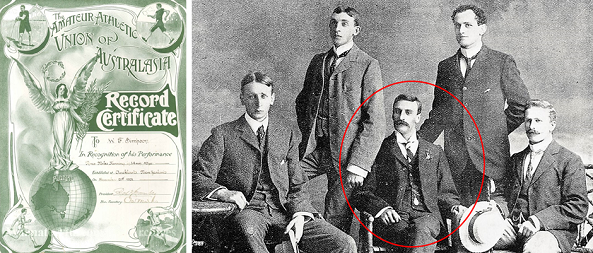
(The Canterbury representative athletic team of 1901, with W F Simpson, circled)
Simpson was a Guard for the New Zealand Railways and was stationed at Waimate, south of Timaru. He fitted athletic training around his work, training at the Victoria Park Oval in Waimate. For a time when working as a Guard on the 38 kilometre long Ashburton-Springburn, line he would clip passenger’s tickets in one carriage, then as the train was travelling uphill and not so fast, he would hop off and run beside the train, jumping back on to clip the next lot of tickets. He was a member of the Tinwald & Districts Sports Club and Coach of the Ashburton Harrier Club.
William Simpson died suddenly on 20 July 1913 at his home in Springburn of pleurisy and pneumonia and was buried a Methodist in the Old Waimate cemetery. Only 37 years old, he was described by the media of the era as "having the heart of a lion", with "dogged determination".
The Final Word ...
“Why does sport still cling to the myth of infinite growth that flies in the face of everything we’ve learned about sustainability? ”
(Emma John, Sportswriter and Author)